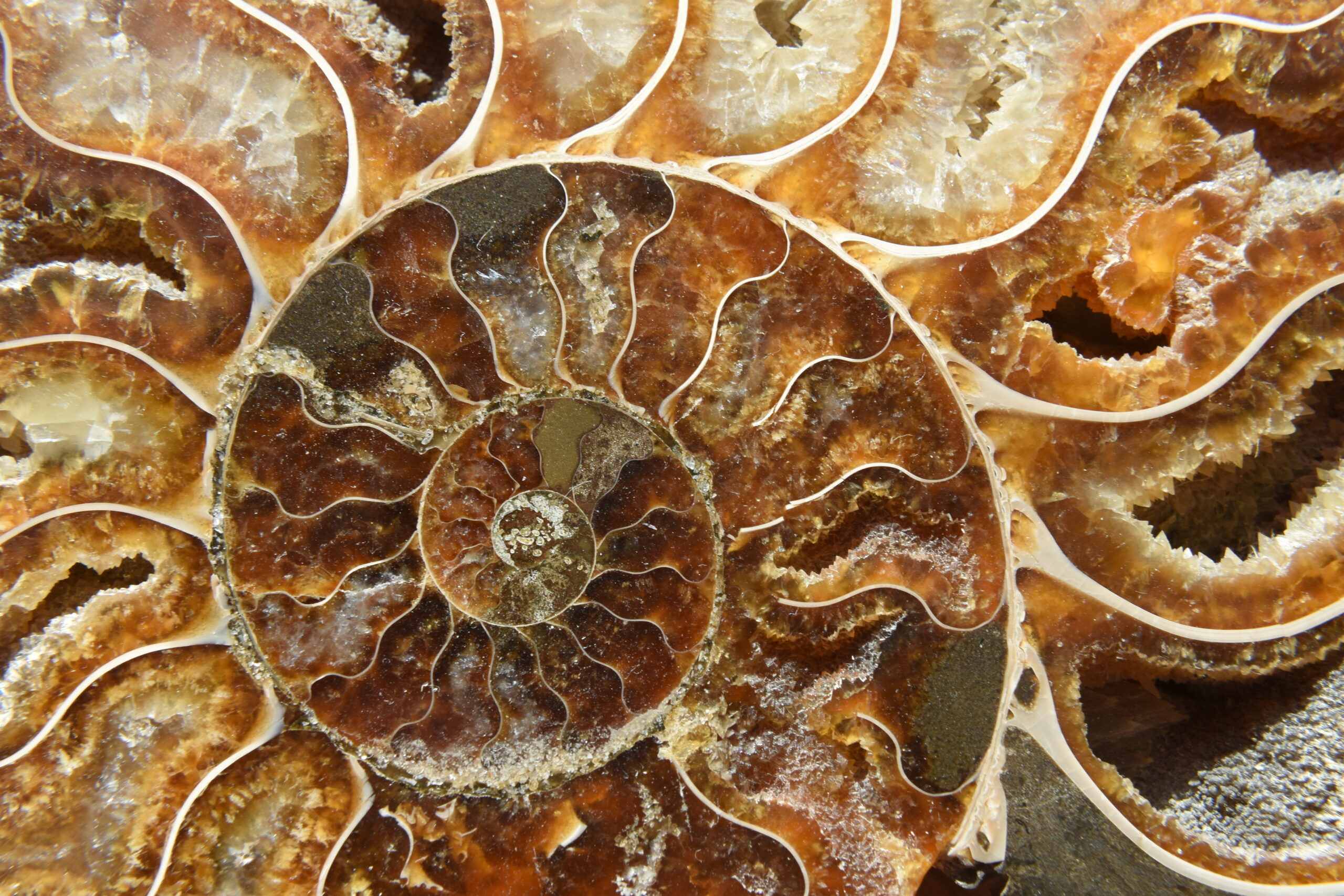Some posts on this site contain affiliate links. If you book or buy something through these links, I earn a small commission (at no extra cost to you). Take a look at my privacy policy for more information.
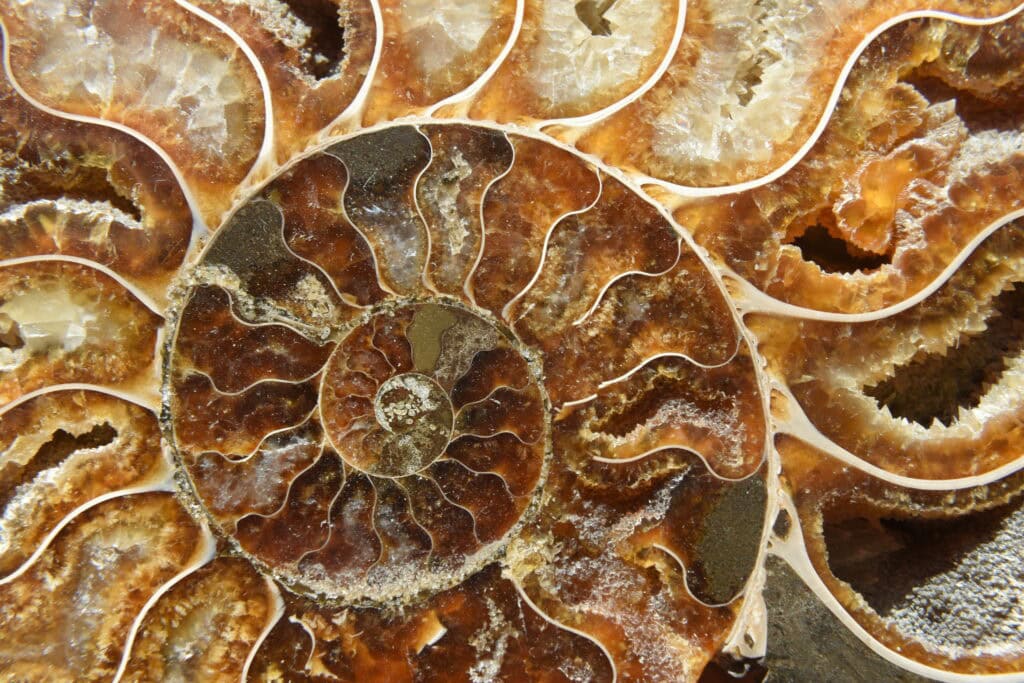
Your guide to the best fossil beaches in Dorset – where you can find fossils easily and safely!
Dorset’s Jurassic Coast is famous for fossil finds. Some incredible discoveries have been made over the years, from the complete ichthyosaur skeleton found by Mary Anning in the early 1800s, to an enormous pliosaur skull uncovered in 2023. Whilst fossils can be found along most of the coastline, they’re more common in some places than others. This is our guide to the best beaches where you can find them often, easily, and safely – without needing any tools or training! Enjoy…
Need to Know: Tips and Safety Advice
This guide is intended for amateurs who simply want to look for fossils along the beach. Don’t bring hammers or other tools to extract fossils. READ MORE in our fossil hunting guide.
The best place to look for fossils (and the safest place for beginners) is along the foreshore: the bit of the beach that’s exposed at low tide. The best time to look for them is when the tide starts going out, as this gives you plenty of time to return when the tide starts coming back.
Winter is usually the best time to find fossils, particularly after storms and bad weather. However, you can still find them in summer – and there are many fixed in larger rocks which can be seen all year round.
- Always check tide times. Some beaches are cut off at high tide, so always be aware of the tide times before setting out.
- Don’t dig in the cliffs. Fossils are washed out naturally by erosion. Digging can trigger rockfalls. It is also not permitted on many beaches.
- Stay away from the base of cliffs and NEVER climb the cliffs. Rockfalls and mudslides are common, especially after bad weather. Stick to the foreshore for safety, and always steer well clear of any recent rockfalls.
- Pay attention to any warning signs. They’re there for you’re safety!
- Always follow the Fossil Hunting Code
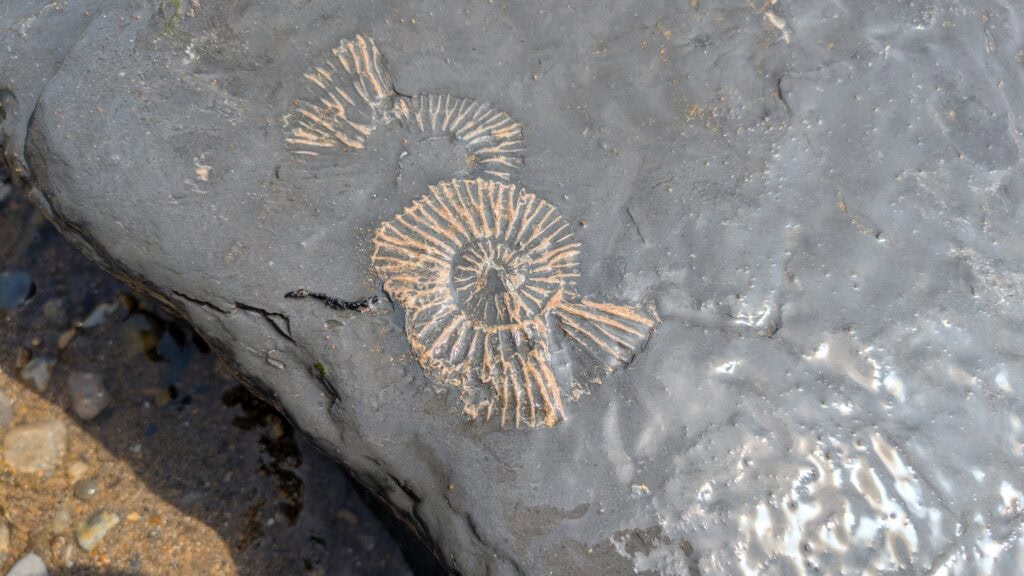
Best Fossil Beaches in Dorset
In a hurry? There’s a map and a quick version of this list near the end of the post. Make sure you check the full details below for relevant safety advice!
East Beach (aka Back Beach), Lyme Regis
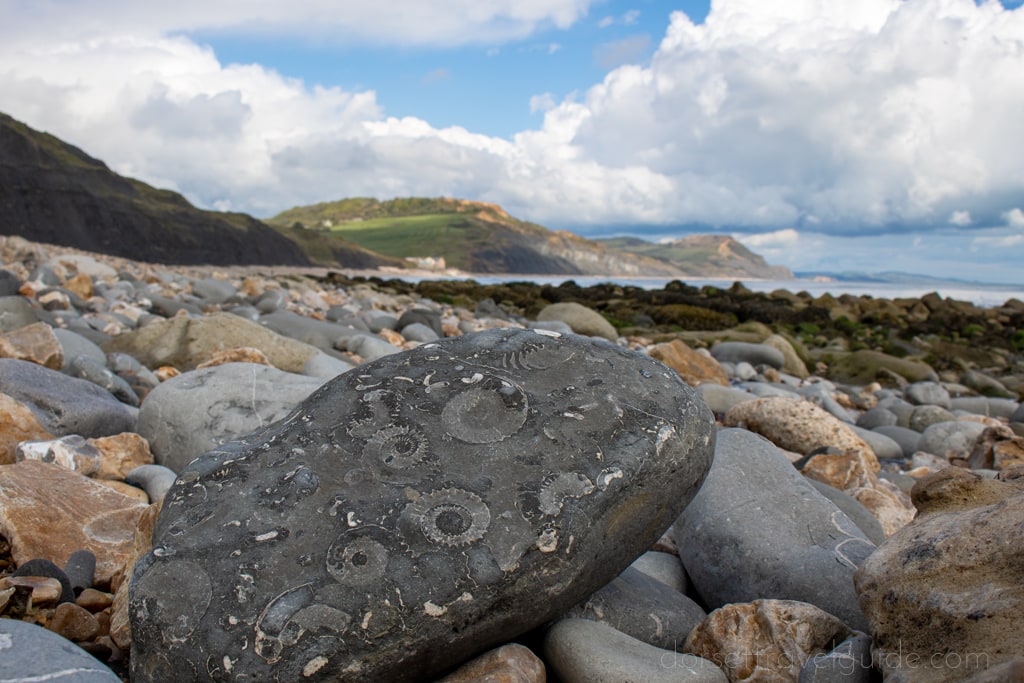
Beach Type: Pebble
Nearest Parking: Charmouth Road Car Park (access via 114 steps)
Lifeguards on Duty: No
Toilets: In car park
Dogs Allowed: All year, off lead
Food & Drink: None on beach.
Lyme Regis is probably the most famous place in Dorset for fossils. This is where the Victorian fossil collector Mary Anning lived and worked – and where she made numerous important scientific discoveries. East Beach, also known as Back Beach, is one of the UK’s best beaches for fossils. However, it’s fairly remote and has no facilities, so it’s not ideal for a family beach day! The nearby Lyme Regis Museum also has a huge collection of locally found fossils and is well worth a visit.
FYI: Stay away from the base of the cliffs as there are active mudslides here and they are very unstable.
The beach is cut off at high tide, so always check the tide times.
Charmouth Beach (West)
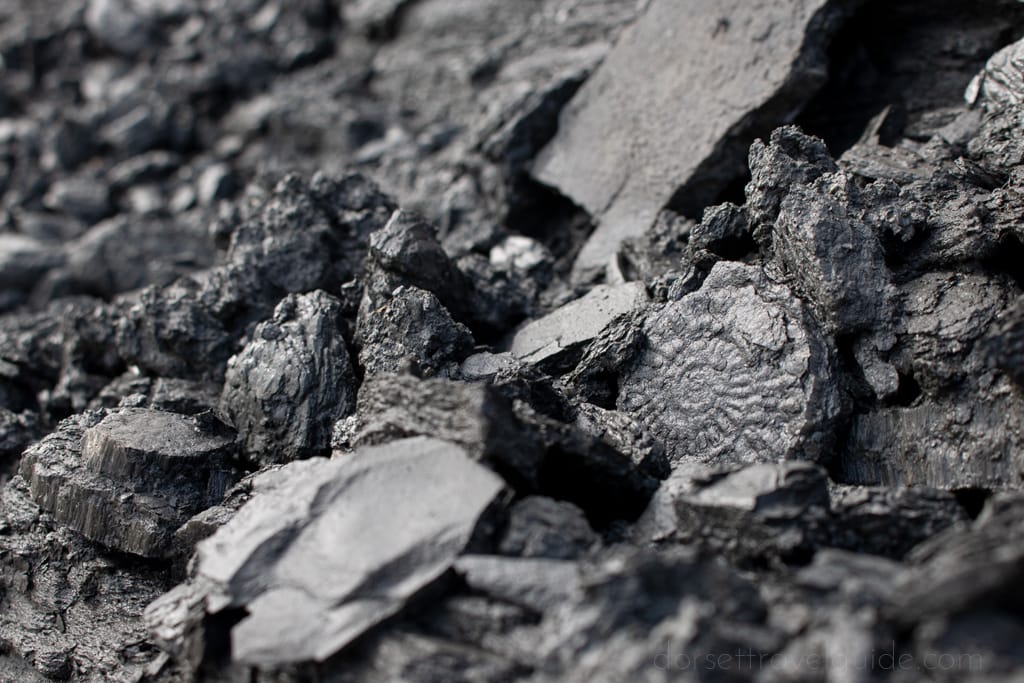
Beach Type: Sand and pebble
Nearest Parking: Foreshore Car Park
Lifeguards on Duty: No
Toilets: Behind Charmouth Heritage Coast Centre.
Dogs Allowed: Not allowed from 1 May to 30 September.
Food & Drink: Beach cafe.
The beach mentioned above runs all the way from Lyme Regis to Charmouth, and you can spot fossils all the way along. The Charmouth end of the beach has toilets and a cafe close by, so it’s a little more suitable for families. However, this end is often a little busier in summer. The nearby Charmouth Heritage Coast Centre has a collection of local fossils and is free to visit!
FYI: Stay away from the base of the cliffs as there are active mudslides here and they are very unstable.
The middle of the beach is cut off at high tide, so always check the tide times.
Monmouth Beach, Lyme Regis
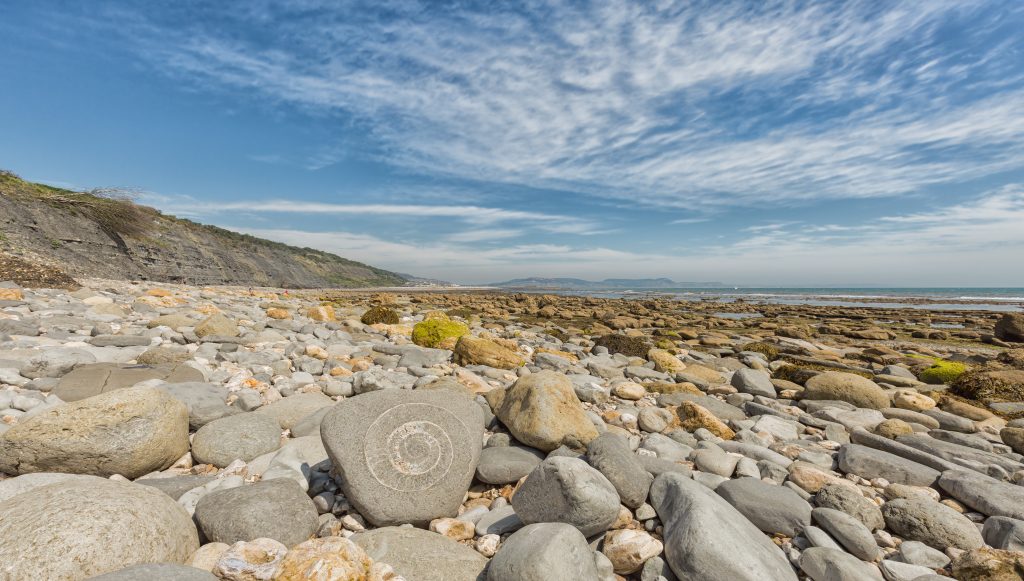
Beach Type: Pebble
Nearest Parking: Monmouth Beach Car Park
Lifeguards on Duty: No
Toilets: In car park
Dogs Allowed: All year, off lead.
Food & Drink: Several options near The Cobb (harbour wall)
Closer to town (and conveniently right next door to a car park), Monmouth Beach is another good spot in Lyme Regis to look for fossils. At the far western end, low tide exposes the “Ammonite Pavement“: a layer of limestone with several large ammonite fossils. You can see ammonites, bivalves, and other fossils along the foreshore, especially following stormy weather.
FYI: Hammering the cliff is not permitted as this is part of an SSSI site.
Kimmeridge Bay
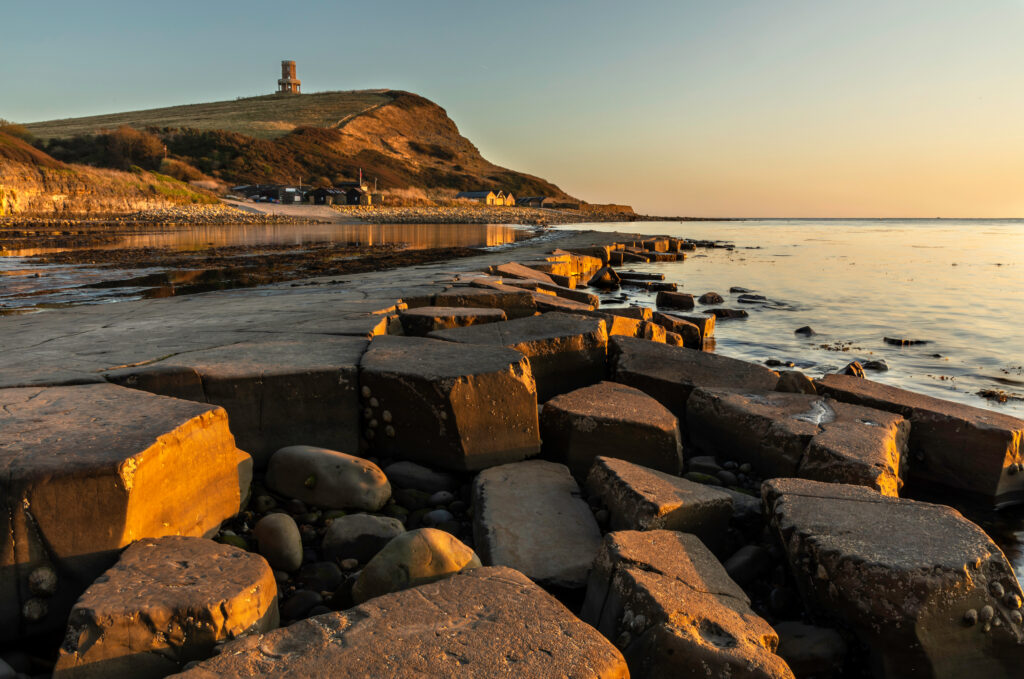
Beach Type: Rock
Nearest Parking: Kimmeridge Bay Car Park
Lifeguards on Duty: No
Toilets: Near Wild Seas Centre
Dogs Allowed: All year, off lead
Food & Drink: None nearby
Dramatic and rocky, Kimmeridge Bay is one of the most impressive spots on Dorset’s Jurassic Coast. It’s also a great spot for fossil finding: the cliffs are made up of Kimmeridge Clay and are rich in reptile remains. You can’t collect from the cliffs, but the best fossils can be found along the foreshore, particularly in the shingle. The nearby Etches Collection Museum also has a fantastic collection of locally found fossils to explore.
FYI: Kimmeridge Bay is owned by the Smedmore Estate and is part of an SSSI. Hammering is strictly forbidden, but visitors are permitted to collect any loose fossils from the foreshore (not from the cliffs).
Ringstead Bay
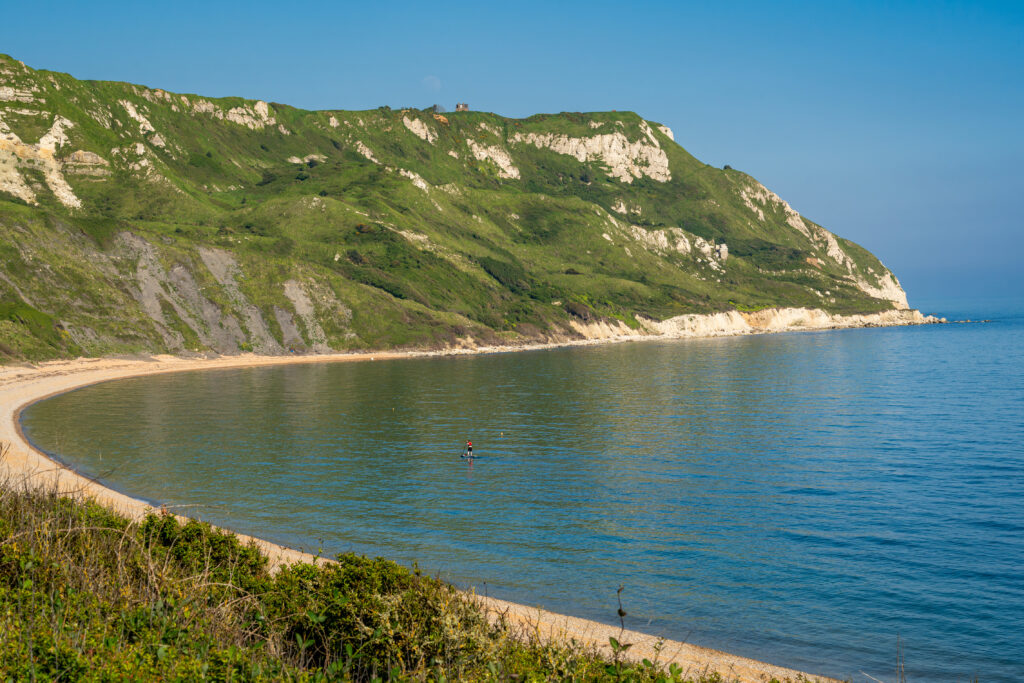
Beach Type: Shingle (sand at low tide)
Nearest Parking: Ringstead Bay Car Park
Lifeguards on Duty: No
Toilets: In car park
Dogs Allowed: All year, off lead
Food & Drink: Cafe near car park
With a large car park, toilets, and a cafe nearby (as well as reasonably sheltered water for swimming), the shingle beach at Ringstead Bay is ideal for families. Fossils are common, particularly giant oysters, and can be found easily on the foreshore. Nearby Osmington Mills Beach, west along the bay, is another good spot.
Seatown
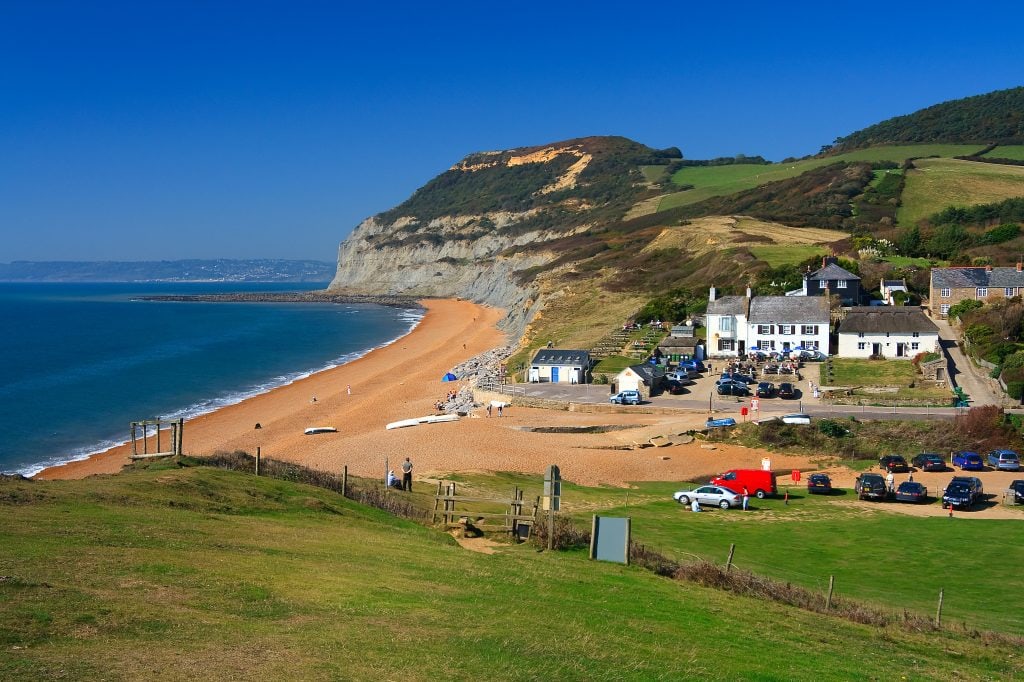
Beach Type: Pebble & shingle
Nearest Parking: Seatown Car Park
Lifeguards on Duty: No
Toilets: Next to beach (end of Sea Hill Lane)
Dogs Allowed: Not allowed from 1 May to 30 September
Food & Drink: Refreshment kiosk and a very popular pub next to beach.
According to the UK Fossils Network, Seatown turns into an ‘ammonite kingdom’ during scouring tides (when strong tidal currents cause sea-floor erosion). Ammonites and belemnites are common on the beach and along the foreshore, particularly following bad weather. It’s also a very family-friendly beach – but stay well away from the base of the cliffs, especially with children.
Chapman’s Pool
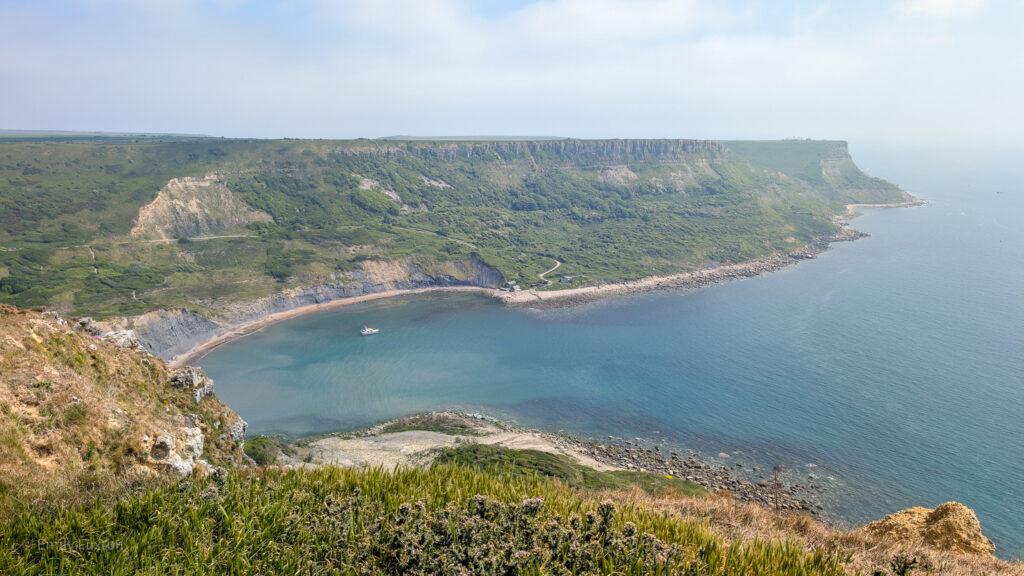
Beach Type: Shingle
Nearest Parking: Renscombe Car Park, Worth Matravers (approx 1 mile walk)
Lifeguards on Duty: No
Toilets: None
Dogs Allowed: All year, off lead
Food & Drink: None nearby (closest options in Worth Matravers)
Chapman’s Pool is a remote and unspoilt beach that can only be reached on foot. The area is rich in fossils, particularly reptile remains, and fossils can be found easily on the foreshore. There are also several larger rocks dotted with ammonites and shells near the water’s edge.
FYI: Collecting from the cliffs is dangerous and not recommended.
Worbarrow Bay
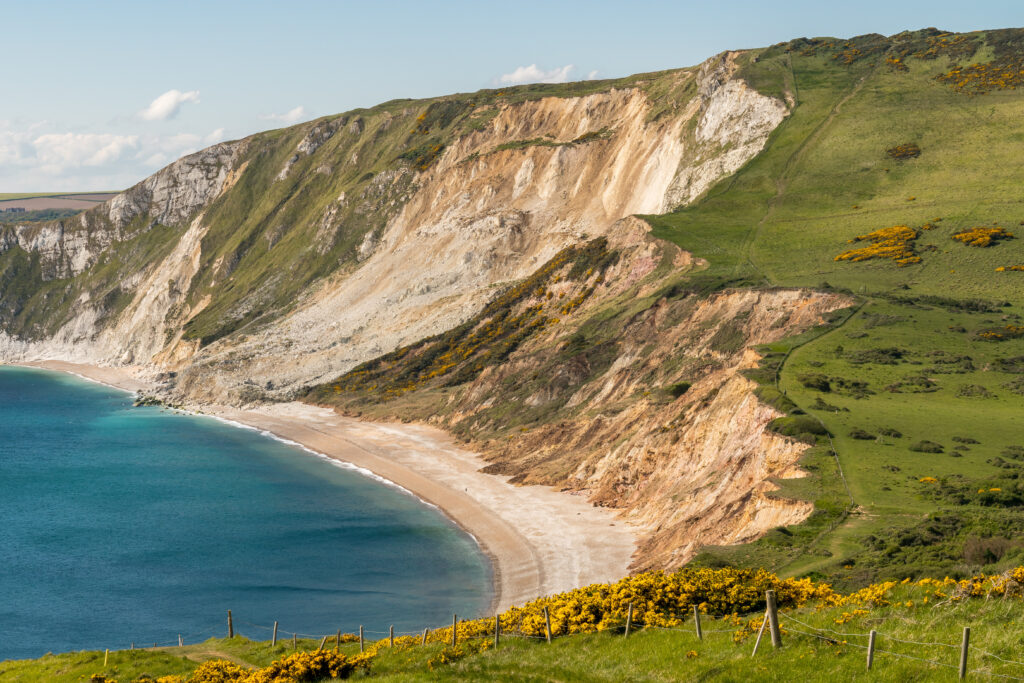
Beach Type: Shingle
Nearest Parking: Tyneham Village Car Park (1 mile walk – cash-only donation)
Lifeguards on Duty: No
Toilets: In car park
Dogs Allowed: All year, off lead
Food & Drink: None on beach.
A one-mile walk from the ruined village of Tyneham, this unspoilt beach is often almost empty. The secluded pebble beach can also be a good spot to find fossils on occasion, although it’s not as prolific as some of the other places on this list. Excitingly, dinosaur footprints were found in the limestone on Worbarrow Tout (the rock stack at the eastern end of the bay).
FYI: Tyneham and Worbarrow Bay can be accessed only when the Lulworth Range Walks are open (as the MOD uses this area for firing practice). Click here to check the timetable.
Guided Fossil Walks
Not sure where to start? Book a guided fossil walk with a local expert for the best chance of finding interesting things – and to learn a bit more about what you’re looking for!
- Lyme Regis Museum – Offers both public walks and private ones. Public walks: adults £19.75, children £12.75, students £12.75.
- Charmouth Heritage Centre – Public walks: adults £14, children £8.
- Jurassic Coast Guides – Private walks: contact them directly for prices.
Dorset Fossil Beaches: Map and Quick List
- East Beach (Back Beach), Lyme Regis
- Charmouth Beach (West)
- Monmouth Beach, Lyme Regis
- Kimmeridge Bay
- Ringstead Bay
- Seatown
- Chapman’s Pool
- Worbarrow Bay
READ MORE: Fossil Hunting in Dorset: A Complete Guide
If you have any questions about any of these beaches, or about fossil hunting in Dorset, scroll down to leave a comment!

